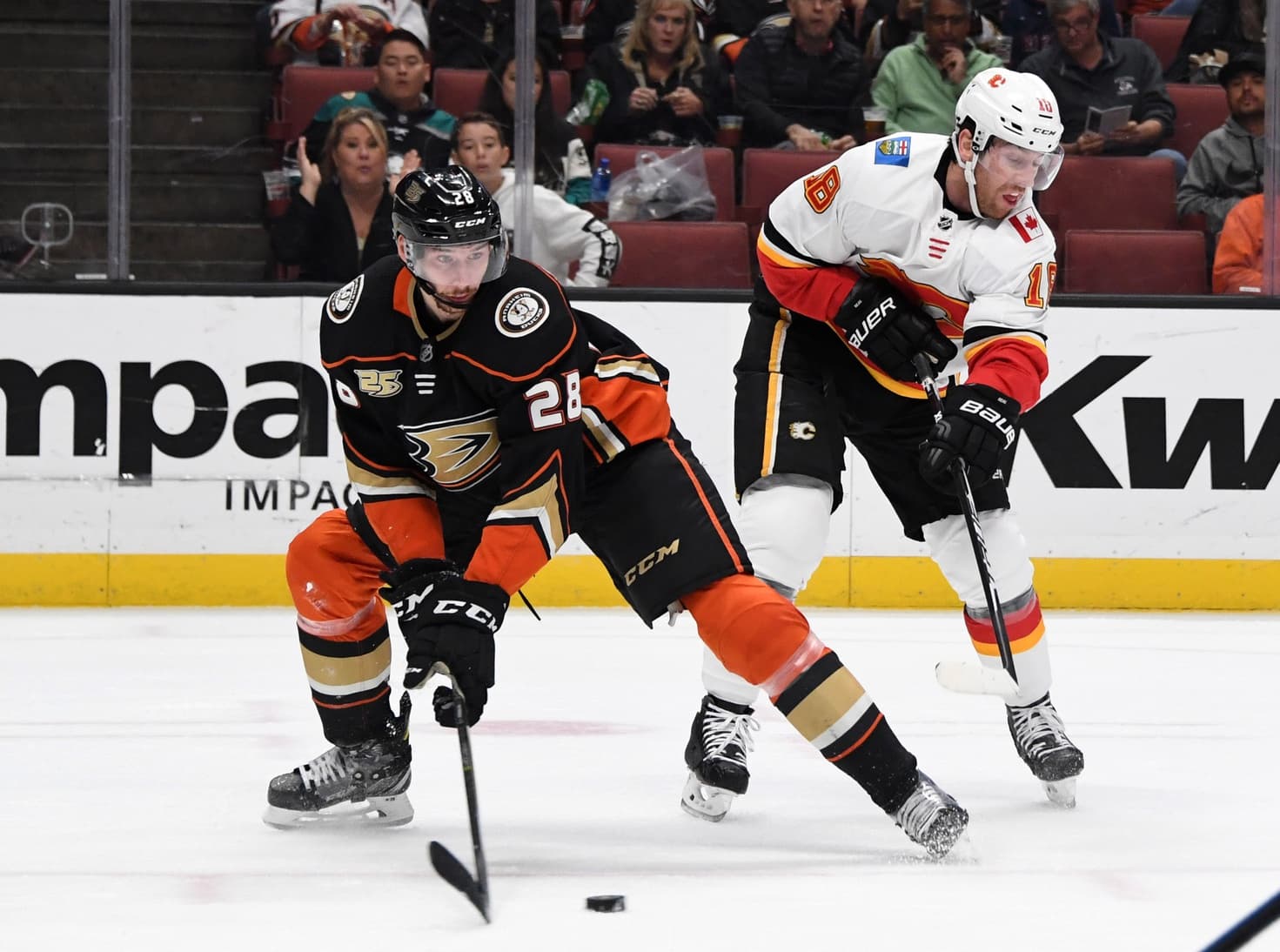FlamesNation player evaluation: James Neal

To cap off an aggressive off-season of change, Brad Treliving signed James Neal, one of the NHL’s consistent 20 goal scorers. For a team that suffered from a lack of right wing depth, power play scoring, bottom six scoring, scoring in general, and rigidity in the lineup in 2017-18, Neal was signed to help with those issues. Ideally, he could play up and down the lineup, rejuvenate the power play, and chip in when others hit cold streaks.
The Flames got, uh, none of that.
2018-19 season summary
It was disappointing.
| Games Played | Goals | Assists | Points | TOI/GP | 5v5 CF% | 5v5 CFrel% | OZS% | PDO |
| 63 | 7 | 12 | 19 | 14:57 | 50.58% | -3.20% | 53.32 | 0.996 |
Neal posted career worsts in nearly every category, hitting lows for ice time, goals, assists, points, CF%, and CFrel%. Rates wise, his CF/60 (56.9) was the fourth lowest in his career, and his CA/60 (55.6) was the fourth highest he’s ever seen. Relative to the rest of the forwards, Neal found himself at the bottom in most categories, only ahead of Garnet Hathaway and Dillon Dube in most cases.
The only redeeming stat (if you can call it that) is his shooting percentage, which was a dismal 4.96%, way below his career average of 11.6%. Adjusting for a normal Neal SH%, and you get 16 goals. Slightly better, but still a bit below expectation. However, none of his other stats are pointing the right way, which suggests that his 20 goal days are starting to gain distance in the rear-view mirrors.
One of many issues beleaguering Neal was that he never really fit anywhere in the lineup. He spent most of his time with Mark Jankowski and Sam Bennett, two players who are still trying to put it all together: a less than ideal situation for a player who’s always needed a setup man. Neal received some spins on the first line, but never gelled as well with Sean Monahan and Johnny Gaudreau as Elias Lindholm did. He also took a few shifts on the second line with Matthew Tkachuk and Mikael Backlund, but couldn’t handle the workloads they usually faced. Ditto with Derek Ryan, who spent a lot of time in the defensive zone.
| Units | 5v5 TOI | 5v5 CF% with Neal | Teammates’ 5v5 CF% without Neal |
| Gaudreau-Monahan | 73:46 | 46.48% | 54.36% |
| Tkachuk-Backlund | 75:49 | 53.57% | 57.36% |
| Bennett-Jankowski | 153:24 | 50.98% | 53.13% |
| Ryan | 146:12 | 50% | 55.72% |
With no clearly defined spot in the lineup, it was tough for Neal to make an impression, but he also didn’t do much to help his case. I’ve covered a lot on his lacking offensive production, but his defensive work was also less than impressive, mostly lazy. When he was noticeable on the ice, it was often for the wrong reasons. It was hard to justify giving Neal a top six shot when everyone else was producing and he didn’t look deserving of the opportunities.
Neal also received some second unit power play time, picking up six points in 140 minutes of action. Again, no real impression.
Compared to last season
Neal was a Vegas Golden Knight last season, helping lead the rag-tag group of misfits to the Stanley Cup finals in their expansion year. He mostly played second line minutes with Eric Haula and David Perron.
Needless to say, he couldn’t find the same magic in Calgary. Part of that has to do with him not playing with two 50 point players, part of that has to do with him just not being as good.
The most pronounced drop off is in his on-ice shooting metrics. While his Corsi numbers (all shot attempts) for per 60 dropped a touch from 57.39 to 56.9, his Fenwick for (unblocked shot attempts) dropped from 42.21 to 40.84, and his shots for (uh, shots) dropped from 30.24 to 27.76. Individually, he took one fewer shot per hour (9.43 to 8.26) and attempted two fewer shots (16.99 to 14.38) at 5v5.
It may not even have anything to do with teammates. In Vegas, his WOWY stats reveal that he wasn’t a significant drag on any of his. teammates In fact, some of his teammates actually benefited from his presence. In Calgary, nearly everyone was better away from Neal.
Really, there’s no other explanation to Neal’s decline between this season and last other than “he was good and now he’s bad.”
What about next season?
It’s going to be a long, rumour-filled offseason for Neal, as is standard fare for extreme disappointments.
A move is unlikely. A buyout this early into his contract will probably not be considered due to the long term impact ($1.916M over the next eight seasons), and a trade is certainly welcome but will also probably not materialize. If we’ve learned anything from the Troy Brouwer experience, it’s that teams won’t take your expensive mistakes.
Optimistically, this past season was just an extremely protracted cold streak. While you should always be cautious with players over 30, Neal’s career history didn’t really suggest a drop-off this dramatic this quickly, and that low shooting percentage won’t last forever. If he can get back on track the Flames might forgive whatever happened this season.
Pessimistically, he’s turning 32 and not getting younger. I lean this way.
2018-19 player evaluations
Recent articles from christian tiberi





